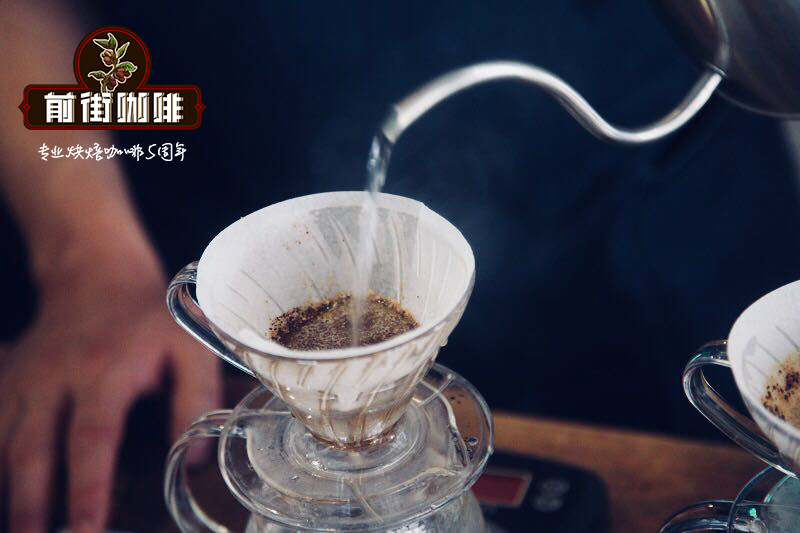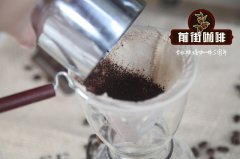What's the flavor of the Gatundu Karinga producing area in Kenya? How is the coffee growing environment in Kenya?

Professional coffee knowledge exchange more coffee bean information please follow the coffee workshop (Wechat official account cafe_style)
What's the flavor of the Gatundu Karinga producing area in Kenya? How is the coffee growing environment in Kenya?
Karinga coffee has dark fruit flavors-intense grapes, plums, blackcurrants, good citrus and tannin acidity, and deep brown sugar sweetness.
Kenya is located at 34-42 degrees east longitude and 5 degrees latitude, covering an area of 580000 square kilometers. There are about 43 million residents. The two main coffee growing areas are located in Mt. Around. Kenya runs all the way to the mountains in central and western Kenya. Elgon on the Ugandan border.
Kenya is a major producer of Arabica coffee in Africa. The following conditions are conducive to its production in the country:
Temperature-Coffee performs well at temperatures of 14 to 26 °C, although Arabica coffee can withstand temperatures up to 30 °C. In Kenya, coffee growing areas experience cool to hot climates, making it very suitable for coffee cultivation. The average temperature is 15 °- 30 °C.
Rainfall-Arabica coffee rains between 1000 and 2000 milliliters a year. Many coffee-growing areas in Kenya have rainfall of up to 1000-2000 mm, which is evenly distributed.
Soil-most growing areas in Kenya have fertile deep volcanic soil suitable for coffee. The soil is well drained and acidic, and the p H value is between 5.3 and 6.0.
Topography-Coffee growing areas have undulating landscapes, hillsides and gentle slopes. This ensures a well-drained and inflatable soil.
Altitude-most planting areas are between 610m and 1830 m above sea level. However, in some areas like Machakos, coffee grows at slightly lower elevations.
Transport-there are good roads in the planting area to enable crops to be transported to procurement centres and factories. It also contributes to the marketing of processed berries.
Labor-Coffee cultivation is labor-intensive. It takes a lot of manual labor. Plant, run and harvest. The densely populated planting area provides the labour force.
Kenya can produce up to 65000 tons of green coffee, which varies from year to year. In recent years, it has reached about 45000 tons. Kenya mainly produces full-washed coffee and is considered by many to be the world's number one producer of high-quality coffee. More than 700000 coffee farmers (smallholders) account for about 55 per cent of the output. Most of the rest are manors. There are about 3000 small estates with less than 20 hectares, 300 larger small estates and about 1100 cooperative wet mills. Coffee exports account for about 10% of Kenya's income.
Around 1910, colonists living on the outskirts of Nairobi began planting trees in areas such as Kiambu and Thika. By 1920, coffee had become Kenya's main export crop. In the 1930s, the coffee industry experienced great changes from colonial experiments to major industries. They began to try different marketing strategies and cooperation systems. Some growers launched the Thika growers' Cooperative Alliance, which later became the Kenya growers' Cooperative Union. KPCU has become the main spokesman for coffee growers in Kenya. So far, they have played an important role as marketing agents and dry powder mills, but they have encountered some challenges in recent years and have gone bankrupt several years ago.
In 1932, the Coffee Committee of Kenya was established. They set up a coffee auction in 1934. In the late 1940s, they set up a nationwide rating system and introduced mechanical shellers to remove parchment.
In 1934, the colonial government allowed the natives to grow coffee under strict regulations, but it was not effective. Since 1946, they have encouraged Kenyans to start growing cash crops. After 1950, the smallholder sector rebounded. After a while, it ruled KPCU. They began to build wet mills in the 1960s.
In 1978, the output of the small-scale peasant sector exceeded that of large industries and still accounted for more than 50% of the total output.
Began to experiment with varieties in the early days of Kenya. Around 1910, they tried the Tanzanian (Tanganyika) grape varieties and mixed them with grape varieties from Mysore, India. This mixture is now called Kent.
In the 1920s, they created something called Kenya Select based on the French delegation.
In 1934, they began to develop new varieties in Scottish laboratories. They found a variety with good drought and insect resistance in the Mondor region of Tanzania. They also collected trees from the original French mission and other species that seemed to perform well. In the 1930s, about 42 different French mission trees and different mocha varieties were selected according to their yield, quality and resistance to pests, droughts and diseases.
The new variety from Scot Laboratories is prefixed with SL. They started with SL1 created by Kenya Select, developed many different SL, continued to use SL2,3,4, and so on, all based on different varieties of French mission, bourbon and Typica. In the end, they got SL 28 and SL 34, which are still widely used.
SL 28 is a tree selected from a drought-resistant variety in Tanzania, with some Ethiopian influence and the characteristics of trees from the Boma Plateau in Sudan. It has broad copper pointed leaves and bold beans, but the yield is very low. It is famous for its exquisite and complex flavor properties.
SL 34 is a French delegation from a region of Nairobi. Its appearance is similar to the old "Kenya Select". It is highly appreciated for its high yield and shows good drought resistance.
K7 is another famous breed, also selected from the French delegation, known for its strong immunity to disease. Nevertheless, the quality of the cup is not as high as that of SL.
Ruiru 11 was founded in the 1980s. The goal is to create a high-yielding plant that is resistant to leaf rust and CBD. They mixed "Hibrido de Timor" (Robusta / Arabica hybrid) with "Rume Sudan" of the Boma Plateau, as well as SL 28 and SL 34 to improve the quality of the cup.
The Blue Mountains were brought from Jamaica and planted in western Kenya around 1913. It's not very successful in Kenya, but you can still find it in the west. Batian is a new variety with high yield and disease resistance, which was released by the Kenya Coffee Research Foundation in 2010. Compared with Ruiru 11, it should improve the quality of the cup and should be closer to SL 28. It includes SL4,N39,N30,Hibrido de Timor,Rume Sudan and K7 from SL 28 and SL 34.
One of the biggest challenges facing coffee plants is the fungi that cause CBD or "coffee pulp disease". Fungi live in the bark of coffee trees and produce spores that stimulate coffee fruits. The coffee fruit turns black, almost black, and if it spreads on farms or estates, it can be devastating. It can be treated with copper formula or organic fungicides. However, it is too expensive for most farmers.
Another challenge is leaf rust. It produces red / brown spots on the leaves. Coffee leaf rust is spread by wind and rain from spores of diseased spots under the plant. It can also be treated with expensive copper-based fungicides.
The coffee sector is divided into small farmers' cooperatives, small and large estates less than 20 hectares. Cooperatives and their wet grinders account for more than 50% of Kenya's coffee production. In our opinion, you can find more coffee from these producers than any other product in the world.
Society is an umbrella organization of one or more wet mills. Typically, you have a Tekangu community that represents Tegu,Karogoto and Ngunguru wet mills. Wet mills in Kenya are called factories, such as Karogoto Factory. Tekangu Society will supervise financing and will become the seller of factory coffee. Individual wet mills will still be responsible for production, management and indirect costs. Farmers can choose where they want to transport cherries, and if the wet mill is done well and can provide farmers with a good second payment, they will attract more cherry suppliers.
A typical wet mill can have about 1000 farmers transporting cherries. They provide a small advance at the time of delivery. Well-managed and well-managed wet mills can return more than 85% of the sales price to farmers. This is after deducting milling and marketing costs. Most wet mills use traditional disc pulpers before dry fermentation, clean in channels, soaked in clean water, dried on raised tables and adjusted in dustbins in warehouses.
Small estates are everywhere, but are more representative in some areas (for example, they are more common in Kirinyaga than in Nyeri). They can offer amazing coffee, but because they are small in production, they often mix coffee at will according to all their goods. In some cases, this may be hit and omitted. They usually use small and improved pulpers of various qualities to process their coffee. Usually they take the same steps for dry fermentation, soaking and drying, but depending on the capacity of the cherry when it enters, it can be more random.
The larger estates are mainly located on the outskirts of Nairobi. They carry out intensive planting, high maintenance plant treatment and irrigation. They can produce up to 1.5 kilograms of green trees, about three times as much as the average small farmer. Many of them outsource management to professional management service providers. Coffee is pulped, dried, washed and soaked in a traditional disc pulper, dried on a raised table, and then adjusted in a box made of wood and wire mesh.
You can find good coffee in Estates's products, but overall, we think they lack the flavor intensity and complexity you can find in other Kenyans.
Pulping
After the coffee is weighed, they enter the main cherry hopper above the pulper. Some wet mills have separate hoppers for low grades, such as under and above pipes. When they start the pulper, the cherry enters the machine through gravity. They usually use disc pulpers, such as old three-plate Agaarde or similar brands. As long as you change the discs from time to time, they will work well. It is also important to adjust the pulper to remove the pulp (fruit) correctly without damaging the parchment. Parchment flows out of the plate so that parchment can be separated by density. The densest beans will sink and pump directly through the channel to the fermentor, such as P1 (parchment 1), and the semi-dense will enter the separate fermentor as P2. Floating object, P3
Ferment
After pulping, the coffee is dry fermented (drained) in a painted concrete tank. Usually they ferment for 18-24 hours. Many factories do intermediate washing every 6-8 hours, which means they add water, stir the parchment and drain again.
Washing and soaking
When the fermentation is completed and the mucus is dissolved, the parchment is washed in the washing channel and is again graded by density. Lighter beans fall off and the rest of the dense parchment is usually soaked in clean water for 24 hours.
Drying and conditioning
After soaking, put the coffee on the burlap mesh pad and dry the skin for up to a day. This is to quickly remove moisture from the surface of parchment. Coffee is usually moved to the traditional drying table after a day. The coffee is then usually dried on the surface of jute clothing or on a sunshade at the top of the wire mesh. The parchment has been moving because they have sorted out the defective parchment and beans. Coffee must be covered with plastic during the hottest times of the day, usually between 12:00 and 2pm and at night. Depending on the weather and rainfall, the drying time is between 12 and 20 days. The moisture target is 11-12%.
They also have a tradition of medium conditions. According to the capacity of the drying table and the concept of the producers, when the coffee is stable at around 16%, some of them put parchment into what they call the black stage. They can be adjusted for a few weeks and then put on the drying table to complete the drying.
Important Notice :
前街咖啡 FrontStreet Coffee has moved to new addredd:
FrontStreet Coffee Address: 315,Donghua East Road,GuangZhou
Tel:020 38364473
- Prev

How does Vietnamese coffee taste? What are the coffee brands in Vietnam?
Professional coffee knowledge exchange More coffee bean information Please pay attention to coffee workshop (Weixin Official Accounts cafe_style) Strong taste Vietnam with tropical climate, most of the Robusta beans planted are high caffeine and heavy taste, most of which are made into instant coffee for export, so most of the coffee drunk in Vietnam is Robusta. In recent years, fine coffee and starba have been cultivated.
- Next

Vietnamese coffee: what does Vietnamese coffee symbolize in Vietnam? What is "coffee date"?
Professional coffee knowledge exchange more coffee bean information please follow the coffee workshop (Wechat official account cafe_style) coffee production, coffee shop common coffee maps, often can not find Vietnamese coffee beans, but Vietnam's coffee export output is among the highest in the world. In terms of drinking method, Vietnamese slow coffee is unique in the world, which is similar to the Italian and American coffee that people are familiar with.
Related
- Detailed explanation of Jadeite planting Land in Panamanian Jadeite Manor introduction to the grading system of Jadeite competitive bidding, Red bid, Green bid and Rose Summer
- Story of Coffee planting in Brenka region of Costa Rica Stonehenge Manor anaerobic heavy honey treatment of flavor mouth
- What's on the barrel of Blue Mountain Coffee beans?
- Can American coffee also pull flowers? How to use hot American style to pull out a good-looking pattern?
- Can you make a cold extract with coffee beans? What is the right proportion for cold-extracted coffee formula?
- Indonesian PWN Gold Mandrine Coffee Origin Features Flavor How to Chong? Mandolin coffee is American.
- A brief introduction to the flavor characteristics of Brazilian yellow bourbon coffee beans
- What is the effect of different water quality on the flavor of cold-extracted coffee? What kind of water is best for brewing coffee?
- Why do you think of Rose Summer whenever you mention Panamanian coffee?
- Introduction to the characteristics of authentic blue mountain coffee bean producing areas? What is the CIB Coffee Authority in Jamaica?

